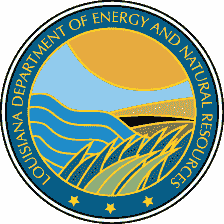Programs
Mississippi River’s 1st large sediment diversion project will begin next year
West Bay diversion agreement will restore wetlands

NEW ORLEANS—Construction will begin in spring 2003 on the West Bay Sediment Diversion Project, a first-of-its-kind wetlands restoration in coastal Louisiana featuring uncontrolled sediment diversion from the Mississippi River.
The U.S. Army Corps of Engineers and Louisiana Department of Natural Resources set the stage for construction by signing a cost-sharing agreement. The $22.3 million cost will be shared 85 percent federal and 15 percent state.
A dredge will cut a channel through the river’s low, narrow bank six miles below the offshore-oil and fishing port of Venice, the terminus of the mainline Mississippi River levee, which stretches about 1,000 miles upriver.
“We expect to be doing more sediment diversions,” said the Corps’ Col. Peter J. Rowan, district engineer, New Orleans District. “Meanwhile, we will learn a lot from this one.”
The idea is to create almost 10,000 acres of marsh from Grand Pass at Venice down to Southwest Pass, the Mississippi River’s portal for ocean ships, Rowan said.
“As a result, we will reap environmental benefits, with new wetlands to nurture crab, shrimp, fin fish, ducks, wading birds and other species,” said Jack Caldwell, the secretary of Natural Resources.
“In addition, Venice will be protected by the marsh, which will act as a buffer to tropical storm surges,” Caldwell said.
The project will be built under the federal Coastal Wetlands, Planning, Protection and Restoration Act, also known as the Breaux Act.
After lessons are learned from West Bay, a second uncontrolled sediment diversion would be directed into Benney’s Bay, across the river from West Bay.
Louisiana’s wetlands loss, estimated at more than 25 square miles a year, has particularly ravaged the Mississippi River delta region.
Uncontrolled diversion means that there will be no concrete structure and big gates to control the diversion flow. Such structures were built for the freshwater diversion projects now in service upriver at Davis Pond and Caernarvon. Though these structures also pass sediment, their primary benefit is the movement of fresh water and nutrients through river levees to the wetlands.
The project will thrust river water and sediment into West Bay, which is now a shallow arm of the Gulf of Mexico, the wetlands having been lost to coastal erosion. The project will be done in two phases:
- Construction of an interim channel that will divert 20,000 cubic feet per second (cfs) of water and sediment at the average river stage.
- Enlargement of the channel for full-scale diversion of 50,000 cfs at the average river stage.
In each case, less water will be diverted at lower stages, and more at higher stages.
The interim diversion will be closely monitored before the larger channel is cut. A relatively small portion of riverbank and adjacent wetlands would be excavated to build the diversion channels.
Note: The agreement was signed Friday, Aug. 6.
Editors: For more information, contact John W. Hall at 225-342-0560 or Phyllis Darensbourg at 225-342-8955.
